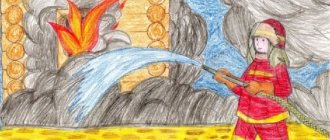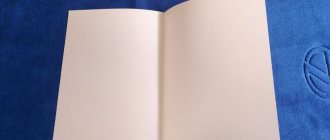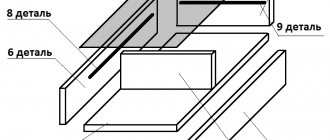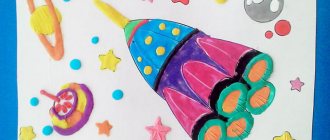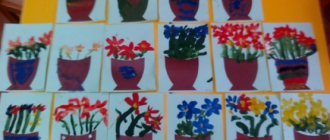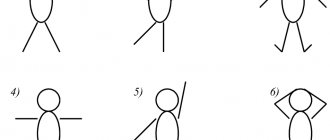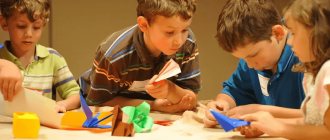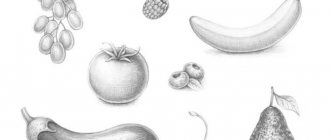Mimosa is clearly associated with the spring holiday, International Women's Day. Nowadays, giving a sprig of mimosa on March 8 is no longer so relevant. But once upon a time this plant was brought to all major cities in unimaginable quantities. In general, mimosa is one of the varieties of acacia. In total there are about 1200 species. They mainly grow in Africa, South America and Australia. African varieties have thorns. This is where their name Akis (Greek) comes from - meaning “edge”. By the way, in France at the end of February every year there is a festival in honor of mimosa. It was introduced in the 19th century and has since been found throughout the south of this country. Many people believe that silver acacia is a shrub. It is not always so.
Sometimes the acacia reaches 25 meters in height. Its bark is smooth and dark gray in color. The tree is spreading and evergreen. Covered with bright yellow fluffy balls, and under them there are small silver-green leaves. One of the accessible ways to admire a fluffy tree is to depict it on paper. We will talk about how to draw a mimosa. Let's look at several ways that will allow every person (both the baby and his parents) to feel like a real artist.
How to draw a mimosa step by step?
Drawing a mimosa on a piece of paper is not difficult at all. But the process requires some patience. How to draw a mimosa with a pencil step by step? To begin, prepare a sheet of paper, colored pencils, an eraser, hard and soft pencils. Designate a place for flowers and leaves. Using a simple hard pencil you need to draw the contours of the stain. It can be of any shape. It all depends on your imagination. Next, the place where the balls will be located needs to be circled with a circle of any shape. In the place where the leaves will be, you should draw straight lines in different directions. Thinner lines should emanate from them. In the areas intended for flowers, you need to draw a lot of circles and use zigzag strokes to give them volume. Drawing leaves is even easier. On the small lines coming from the branch, draw short strokes. Things will go faster if you draw strokes without lifting your hands, in a zigzag manner. This way you need to display all the leaves.
"Mimosa branch." Drawing with cotton swabs
Natalya Solomatina
"Mimosa branch." Drawing with cotton swabs
Unconventional drawing “ Mimosa branch ”
.
Secondary speech therapy group No. 2
Teacher Solomatina Natalya Nikolaevna
Implemented educational field “Artistic and aesthetic development”
.
Integration of educational areas: “Speech development”
,
“Cognitive development”
Non-traditional technique: drawing with cotton swabs .
Goal: to introduce children to an unconventional drawing technique - drawing with cotton swabs ; teach how to draw small flowers using cotton swabs .
Objectives: teach how to draw with gouache using a cotton swab ; develop interest in unconventional images on paper; develop a vision of the artistic image, form a sense of composition; consolidate knowledge of flowers; develop the articulatory apparatus and fine motor skills of the hands; evoke emotional responsiveness.
Preliminary work: looking at illustrations of spring flowers, talking about the coming season and the upcoming holiday, memorizing poems, songs, drawing on a free topic .
Vocabulary work: yellow, golden, fragrant, tender, bright
March 8
How to draw a mimosa on a postcard? Everything is very simple here. A sprig of mimosa can be made in the shape of the number “8”. To do this, you need to draw a three-dimensional figure eight on the top side of the postcard with a simple pencil. Further from the number you need to draw branches on both sides. They will look better if you make them asymmetrical. On the drawn figure eight, you need to depict mimosa balls using yellow gouache. Next, take light brown paint and fill the space between the balls with it. Then color the branches green. The postcard is ready. All that remains is to write a congratulatory verse.
Summary of the lesson on drawing with cotton swabs “A sprig of mimosa for mom” in the second early group
Natalia Kornilova
Summary of the lesson on drawing with cotton swabs “A sprig of mimosa for mom” in the second early group
Summary of the lesson on visual arts using an unconventional drawing “ A sprig of mimosa for mom ”
in
the second early group .
• Develop aesthetic perception; learn to create a composition by placing an image over the entire surface of the sheet.
• Learn to draw a mimosa by dipping a cotton swab ;
• Fix the skill of applying paint close to the branch , nearby, thickly, but clearly, so that each flower is visible ;
• Develop creativity and artistic taste;
• Develop thinking, imagination, speech, attention;
• Develop the ability to listen to teachers’ speech
• Foster in children the desire to bring joy to a loved one.
Equipment: Katya doll, vase with mimosa sprigs drawing sheets , gouache, wet wipes, cotton swabs .
Preliminary work: conversation about the upcoming holiday of March 8, showing illustrations depicting spring flowers , reading poems about spring.
Integration of educational areas:
Gouache
If we talk about how to paint a mimosa with paints, then everything is simple here too. Prepare jars of gouache, cotton swabs, brushes of different sizes, a sheet of paper and a cloth to wipe your tools and hands. Take a wide brush and wet the sheet with water. Next, with the same brush you need to make several strokes with green and blue colors of different shades. There should be a lot of paint. Then paint over the entire sheet with the paint already applied. No need to wait for it to dry. Take a skewer or brush and, with the back of the cutting, mark mimosa branches from which small stems will emanate at an angle of 45°. If you don’t like something, you can simply paint over everything and start over. Next, you can take a little dark yellow or light brown paint on your little finger and apply circles to the branches. Then, using a cotton swab with orange paint on it, you must also apply circles. Change the stick and apply yellow balls in the same way. If desired, you can add just a few white dots. The drawing is ready. You can draw such a mimosa either independently or with your child. He'll really like it.
Children's master class. Drawing with cotton swabs in the middle group “Mimosa sprig”
Korneeva Valentina
Children's master class. Drawing with cotton swabs in the middle group “Mimosa sprig”
On March 8, the children and I drew “
Mimosa Sprig ” with cotton swabs . After all, no gift is more valuable than one that is made with soul and with your own hands.
— introduce children to an unconventional drawing technique - drawing with cotton swabs ;
— teach how to draw small flowers using cotton swabs .
- teach how to draw with gouache using a cotton swab ,
- develop interest in unconventional images on paper,
- develop a vision of the artistic image,
- develop fine motor skills of the hands,
- develop a sense of composition,
- consolidate knowledge of flowers ,
- evoke emotional responsiveness.
- looking at illustrations of spring flowers ,
- conversation about the coming time of year and the upcoming holiday,
- memorizing poems and songs.
— cotton buds.
Thank you for your attention!
Drawing with cotton swabs with children 2-3 years old “Mimosa Branch” “Mimosa Branch”. Drawing with cotton swabs. Conducted by Sysoeva Lyubov Viktorovna Age group: first junior Non-traditional drawing.
Children's master class on the application “Mimosa sprig for mom” Materials for the master class: a set of colored self-adhesive velvet paper, a glue stick, scissors, a simple pencil, a template. Children's master class on drawing with cotton swabs in the middle group for Mother's Day "Heart for Mommy" The most important and most important holiday is approaching - Mother's Day. This holiday appeared recently, but has already become firmly established in our lives. Summary of a lesson on drawing with cotton swabs “A sprig of mimosa for mom” in the second early group; synopsis of a lesson on visual arts using an unconventional method of drawing “A sprig of mimosa for mom” in the second early group. Kornilov. Lesson notes for the younger group. Unconventional drawing with cotton swabs and poking “Snowflakes” Educational field: “Artistic and aesthetic development.” Integration of educational areas: “Cognitive development”, “Speech. Fly agaric. Drawing with a non-traditional technique - with cotton swabs GCD for drawing “Amanita” non-traditional technique (with cotton swabs) Purpose of the lesson: to continue to introduce non-traditional visual arts.
Non-traditional drawing with cotton swabs in the 1st junior group “Cup with red polka dots” Non-traditional drawing in the 1st junior group with cotton swabs “Cup with red polka dots” Educational area: “Artistic and aesthetic.
Non-traditional drawing of “Fruits and Vegetables” with cotton swabs Drawing is one of the leading activities of children attending preschool educational institutions. It promotes knowledge of the environment.
Source
Determine the location of the composition
For a novice artist, drawing thin, delicate leaves and tiny fluffy mimosa balls one by one seems like a long and tedious task. But the process will go much faster if you draw in stages and first determine the location for the groups of leaves and flowers. Determine the place on the leaf where your mimosa will be. Using a hard pencil, draw the contours of the stain. Since mimosa is a living plant, it does not have a rigid structure, and the spot can be any shape you like. Of course, there is no need to paint it over.
If you decide to draw mimosa with a simple pencil, prepare two - hard and soft. The first one is needed for sketching, the second one is for drawing details.
Progress:
To the music of P. Tchaikovsky, children meet the teacher with a bouquet of mimosa .
- How many of you know the name of this flower? This is a mimosa . Look at the mimosa , smell it, touch it carefully. What is she like? (Yellow, fluffy, fragrant, tender, beautiful)
.
-Take a sprig of mimosa , stand up straight, watch and listen to how I do the exercise. (Inhale, hold your breath, as you exhale say “Oh, what a fragrant mimosa ”
).
“You saw that I took a breath, then held my breath, and then, as I exhaled, I said, “Oh, what a fragrant mimosa ”
. Let's try to do this together.
- Oh, look, several flowers fell on the table . Place the mimosa flower on your palm , as I do, and now place your palm on the edge of the table. Take a magnifying glass and hold it up to the mimosa . Fine. Now slowly lift the magnifying glass. What's going on with mimosa ? Now bring your magnifying glass closer to the mimosa . Did you like this task? Perform the exercise several times.
Educator: - Children, what time of year has it come?
Children: - Spring has come.
Educator: - What is happening at this time?
Children: - Nature is waking up, birds are chirping, the sun is shining brightly, drops are dripping loudly.
Educator: - Children, what are the very first flowers that appear in the spring?
Children: - Snowdrops, dandelions, mimosa .
- Let's take a look at the bouquet of mimosa .
— What color are mimosa flowers ?
- What shape are the flowers ? What kind of leaves?
mimosa bouquet again . The leaves of the mimosa are beautiful , carved, green in color, and the flowers are bright , golden, small and fluffy, there are many, many of them on the branch.
Drawing with cotton swabs with children 2–3 years old “Mimosa Branch”
Lyubov Sysoeva
Drawing with cotton swabs with children 2–3 years old “Mimosa Branch”
«mimosa branch»
.
Drawing with cotton swabs .
Conducted by Lyubov Viktorovna Sysoeva
Age group: first junior
Unconventional drawing “ Mimosa branch ”
.
Implemented educational field “Artistic and aesthetic development”
.
Integration of educational areas: “Speech development”
,
“Cognitive development”
Non-traditional technique: drawing with cotton swabs .
Goal: to introduce children to an unconventional drawing technique - drawing with cotton swabs ; teach how to draw small flowers using cotton swabs .
Objectives: teach how to draw with gouache using a cotton swab ; develop interest in unconventional images on paper; develop a vision of the artistic image, form a sense of composition; develop the articulatory apparatus and fine motor skills of the hands; evoke emotional responsiveness.
Preliminary work: looking at illustrations of spring flowers, talking about the coming season and the upcoming holiday, memorizing poems, songs, drawing on a free topic .
Vocabulary work: yellow, golden, fragrant, tender, bright

